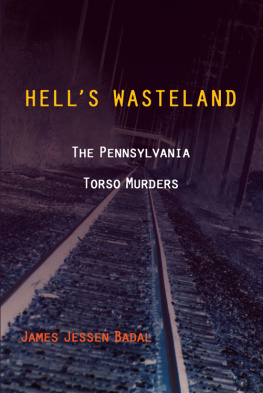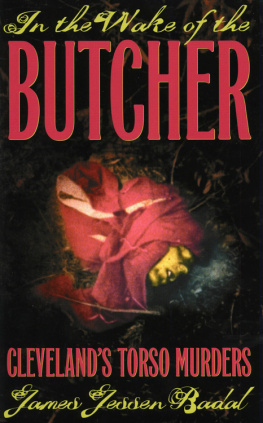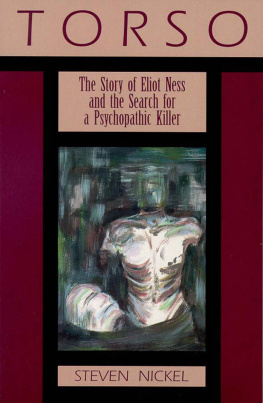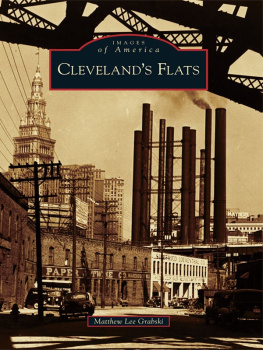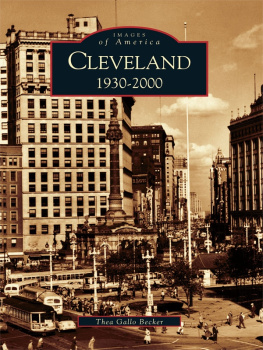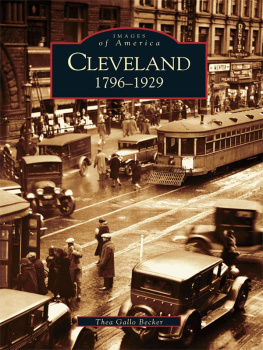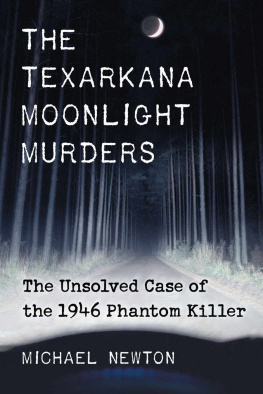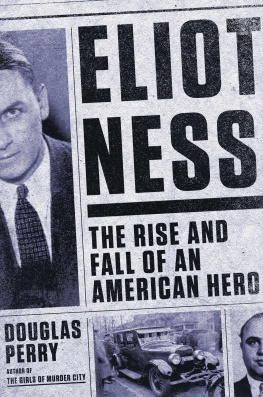
Hells Wasteland
HELLS
WASTELAND
The Pennsylvania Torso Murders
JAMES JESSEN BADAL

Black Squirrel Books
an imprint of The Kent State University Press
Kent, Ohio 44242 www.KentStateUniversityPress.com
Frontis: A lonely stretch of deserted railroad track south of New Castle, Pennsylvania. The empty desolation of spots like this made them ideal dumping grounds for butchered murder victims. Photograph by Mark Wade Stone; courtesy of StoryWorks.TV.
BLACK SQUIRREL BOOKS
Frisky, industrious black squirrels are a familiar sight on the Kent State University campus and the inspiration for Black Squirrel Books, a trade imprint of The Kent State University Press.
www.KentStateUniversityPress.com
2013 by The Kent State University Press
All rights reserved
Library of Congress Catalog Number 2012043494
ISBN 978-1-60635-153-6
Manufactured in the United States of America
Library of Congress Cataloging-in-Publication Data
Badal, James Jessen, 1943
Hells wasteland : the Pennsylvania torso murders / James Jessen Badal.
p. cm.
Black squirrel books.
Includes bibliographical references and index.
ISBN 978-1-60635-153-6
1. Serial murdersPennsylvaniaNew Castle. 2. Homicide investigationPennsylvaniaNew Castle. 3. Serial murdersOhioCleveland. 4. Homicide investigationOhioCleveland. I. Title.
HV6534.N38B33 2013
364.152320974893dc23
2012043494
17 16 15 14 13 5 4 3 2 1
For Paul, with deepest gratitude
A puzzle inside a riddle wrapped in an enigma.
Winston Churchill on the Soviet Union
CONTENTS
INTRODUCTION
AND ACKNOWLEDGMENTS
Its a story I have told many times. During the last two days of the semester in my eighth-grade American history class, our teacher, John Gillett, decided to regale us with the tale of Clevelands infamous, unsolved torso murders from the mid-1930s, as told in John Bartlow Martins article from the November 1949 issue of Harpers Magazinea fascinating piece that bore the grimly alluring title Butchers Dozen: The Cleveland Torso Murders. Eighth grade was not exactly my finest hour as a student, but if my thirteen-year-old ears remained almost permanently deaf to the wonders of Americas past, they certainly perked up as our teacher read Martins vivid account of the brutal series of decapitation murders that pitted Clevelands safety director, Eliot Ness, against the unseen and unidentified Butcher perpetrating horrible crimes in the central city, right under the noses of the police. I was fascinated, although as I eagerly soaked up the details of those unspeakable murder-dismemberments, the thought that I might one day write a book about this local fiend, dubbed by some city pundits Clevelands Jack the Ripper, never entered my mind. But write it I did. And when the Kent State University Press published In the Wake of the Butcher: Clevelands Torso Murders in 2001, I thought that was the end of it: my long-standing debts to author John Bartlow Martin, to my American history teacher, John Gillett, and to the specters that still haunt Kingsbury Run had been paid.
In 2001, I certainly did not anticipate a second book on Clevelands sensational butcheries. However, my nagging doubts about the official version of events, particularly concerning the arrest and death of Frank Dolezal, together with a sudden influx of information on that particular aspect of the case, led me to expand what had been a single chapter of In the Wake of the Butcher into a new book, Though Murder Has No Tongue: The Lost Victim of Clevelands Mad Butcher (2010). The reasons behind this third book are a little more complex. In the midst of the cycle of murder-dismemberments going on in Cleveland came news from New Castle, Pennsylvaniaa small industrial city southeast of Cleveland and north of Pittsburghthat killings with remarkably similar modes of operation (MOs) had been going on there at least since the mid-1920s. Various officials from Cleveland made the relatively short trip to New Castle over the next couple of years to explore the possibility that all these grisly murders in both cities were somehow linked. Opinion was split: some cautiously hinted that there might be a connection, while others were more skeptical. Initially, the Cleveland press establishment gave scant attention to Pennsylvanias troubles. After all, local officials were divided about any possible link, and Cleveland was wrestling with its own ongoing nightmare of murder and mutilation. Decapitated and otherwise dismembered bodies had continued to appear at various points in the inner city despite the largest and most intense investigation in Cleveland history, and law enforcement seemed no closer to an answer than it had been when the killings officially began in September 1935. As far as the press was concerned, the Pennsylvania atrocities were an interesting footnote to the murder-dismemberments occurring in Cleveland. Although in my first book, In the Wake of the Butcher, I devoted some space to a discussion of the New Castle killings, I treated them as the local press had in the 1930sas an intriguing sidelight to what was happening in Cleveland.
In 2003, Chuck Govean enterprising detective with an entrepreneurial flair in the Cleveland Police homicide unitput together a three-hour bus tour with the catchy title of Mystery, Mayhem, and Murder Tour, an odyssey that took Clevelanders with a yen for the citys dark past to all the sites and landmarks associated with the torso murders that had not been plowed under or built over, as well as to the Cuyahoga County Coroners Office. The final attraction in this tour through the citys underbelly was the rather extensive and grisly display on the torso murders in the Cleveland Police Museum. When Gove inaugurated the tours, In the Wake of the Butcher had been gracing bookstore shelves for two years, and he asked me if I would meet the tour groups at the museum, sum up the entire case, and answer any questions. So, on specified Friday evenings for the last ten yearssurrounded by old police photos of dismembered body parts and flanked by masks representing four of the victimsIve stood ready to answer any questions the mystery fans cared to ask. Invariably, there would be enquiries about similar killings going on outside Clevelandspecifically those pesky New Castle murders. Over time, I had crafted answers to such enquiries that ranged from noncommittal to dismissive. All of my responses tended to begin the same way: Doubtful! Probably not! Hard to say! Cant be sure!
It came to my attention, however, that other commentators who had written about the torso murders, either in book form or online, were nowhere near as reticent as I about connecting the Pennsylvania murders to those committed by Clevelands Mad Butcher. In fact, some imaginative scribes seemed on the verge of attributing to a single perpetrator virtually every American murder occurring between 1925 and 1950 that involved decapitation, mutilation, or dismemberment. Such flights struck me as unnecessary attempts to puff up the reputation of Clevelands Butcher to make his killings there more horrible and therefore, perhaps, more attractive to a modern true crime buff. In more recent years, after all, serial killers have operated over wide geographic areas and racked up impressively high body counts. Ted Bundy is thought to have thirty victims to his credit, while Gary Ridgwaythe Green River Killerkilled close to fifty. Compared with these appalling statistics, the Butchers officially recognized tally of twelve victims, spread out over four years and confined mostly to Clevelands inner city, seems downright paltry. I suppose that in some writers minds, expanding the size of the Butchers hunting ground and granting him more victims were simply ways of giving him greater stature, of making him more worthy to stand alongside more recent and far more prolific serial killers. But Jack the Ripper is traditionally held responsible for only five vicious murders over a three-month period in the narrow confines of Londons East End, and his stature in the history of serial murder is not diminished by either his low body count or the very small geographic area in which he operated. The Butchers crimes rank among the most horrific imaginable, and assertions that he operated over an area far wider than inner-city Cleveland and racked up substantially more victims than he is traditionally blamed for do not make them more horrible.

